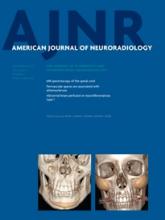ABBREVIATIONS:
- CJD
- Creutzfeldt-Jakob Disease
- PRNP
- prion protein gene
Introduction
Protein infectious agent or “prion” is a concept developed by Stanley Prusiner in the 1980s of a form of infectious disease involving proteins rather than traditional pathogens.1 More accurately, prion disease is a heterogeneous collection of neurodegenerative diseases characterized by alteration of a naturally occurring prion protein to a malformed protein with varying forms of presentation and transmission other than infection. Within the largest group of prion diseases—Creutzfeldt-Jakob disease—there are sporadic, familial, iatrogenic, and variant forms. CJD is an endemic disease with worldwide distribution; estimates of the incidence of sporadic or idiopathic CJD vary from 1 to 2 cases per million population annually.
What is the Normal Function of the Prion Protein?
The etiology of CJD entails a misfolding of the prion protein, but there is presently no consensus on a specific function for this protein. In light of its central role in a neurodegenerative disease, it is expected that the prion protein performs important functions in the brain, which, when disrupted, may lead to impairment of neurologic function. Prions are thought to serve in neuronal signaling as a membrane protein with cell signal-transduction properties.2 Many authors argue that the prion protein plays a role in some cognitive tasks as supported by the association of conditions with cognitive impairment and prion protein gene mutations, but there is some contention in the literature on this topic.3⇓–5
How Does Abnormal Prion Protein Cause Disease?
The misfolded prion protein is marked by a shift from α-helices present in normal proteins to β-pleated sheets due to changes in the amino acid sequence. This abnormal protein accumulates within the brain, possibly further propagated by a direct change in the conformation of neighboring normal protein by contact with the abnormal prion protein. Subsequently, neuronal death leads to spongiosis within affected regions throughout the brain; there is also accumulation of τ protein concomitant with neuron loss. These changes occur while there is a wide variety of neurologic deficits ranging from rapid dementia, ataxia, and extra-pyramidal symptoms to psychiatric manifestations.
What are the Genetics of Familial CJD?
Familial CJD (and related inherited prion diseases: fatal familial insomnia and Gerstmann-Straussler-Scheinker disease) manifests in a variety of different forms caused by changes to PRNP on chromosome 20 that may occur with deletion, insertion, or point mutations—all in autosomal dominant patterns of inheritance. PRNP mutations are highly penetrant, meaning that the presence of a PRNP mutation all but guarantees the eventual progression of CJD in an individual. However, beyond pathognomonic PRNP mutations (for which particular types of familial CJD are named), there are also polymorphic codons elsewhere within the gene. One location in particular is the codon 129, which codes for either methionine or valine and is the target of molecular diagnostic tests of CJD.6 This codon is frequently involved in all forms of CJD, and methionine homozygosity appears to constitute the most common polymorphism associated with an increased risk for CJD.7 More recent work argues for a protective effect of heterozygosity at codon 129 as protection against kuru (an unusual form of prion disease associated with cannibalism in a specific population of Papua New Guinea).8 Thus, variance in CJD presentations pivots primarily on the nature of the PRNP mutation and then is further modified by polymorphisms within codon 129 on both the mutated and wild alleles.
What Are Some Forms of Familial CJD?
The most common form of inherited CJD involves the E200K (lysine [K] in lieu of the glutamate [E]) mutation, which has been noted in an assortment familial clusters including Libyan Jews (most prominently) and families in Slovakia and South America—this manifestation shares great similarity to sporadic CJD both clinically and on diagnostic imaging.9,10 The next most common mutation is V210I (isoleucine [I] in lieu of valine [V]), but this condition does not have a clear pattern.10,11 To date, approximately 30 mutations associated with inherited prion disease have been identified in a diverse group of populations, and it is likely that, with increased awareness and improved molecular tools, more mutations will be observed.6,10
REFERENCES
- Received December 18, 2012.
- Accepted after revision December 19, 2012.
- © 2013 by American Journal of Neuroradiology












